💃 Linda Clifford’s Disco Spark: If My Friends Could See Me Now
The Twelve Inch 184 : If My Friends Could See Me Now (Linda Clifford)
When I first tuned in to my favorite disco show on Dutch radio back in 1977/78, a handful of names kept coming up again and again. Linda Clifford was one of them. Her records were on heavy rotation, and she was climbing to the top of the US dance charts. At the time, I believed disco would last forever (little did I know 😂), and I was certain we’d be hearing much more from her in the years ahead.
And in a way, we did. Clifford released several albums in quick succession and scored more Billboard dance #1s after her 1978 breakthrough. Yet she never became the household name that someone like Donna Summer or Gloria Gaynor did. So when I started this newsletter, she went straight onto my shortlist. I wanted to understand her story, and more specifically, why she didn’t get the same kind of crossover success.
So let’s rewind. We’ll use her first dance #1, “If My Friends Could See Me Now,” as a lens into the career of an artist who, depending on how you look at it, either never outgrew disco, or carved out her own unique space within it.
👋 Welcome, I’m Pe Dupre, thanks for stopping by.
This is The Twelve Inch, my newsletter about the history of dance music from 1975 to 1995, told one twelve-inch record at a time.
If this landed in your inbox because a friend forwarded it, I’d love for you to subscribe so you don’t miss the weekly episodes. Each one dives into a track, its story, and the culture around it.
And if you’re already enjoying the free posts, would you consider becoming a paid subscriber? Your support helps me keep researching, writing, and unearthing the stories behind the music.
🎤 Who Was Linda Clifford?
Linda Clifford was born in Brooklyn in 1948 and pursued acting and singing in parallel. She landed small but visible screen roles, most notably in The Boston Strangler (with Tony Curtis) and Sweet Charity (with Shirley MacLaine). While acting gave her confidence, music was always her true calling.
She eventually committed full-time to singing on the club circuit. Without a steady day job, life wasn’t always easy. Some weeks she wouldn’t get paid at all because the manager couldn’t, or wouldn’t, hand over the money. Looking back on the harsh realities of being a performer, she once said: “It’s a brutal business, seriously, from the beginning all the way through. It just takes different shapes of brutality as you progress in the business”
Still, Clifford was a survivor. She refused to give up. Once, suffering from pneumonia and running a fever, she was literally tied to a barstool so she could make it through her set. Later, she moved to Chicago, and when money was tight, she told herself, “I must do something.” Acting on that impulse, she walked straight into Curtom Records, the label founded by Curtis Mayfield, without an appointment. Mayfield wasn’t there that day, but he got the message. A few nights later, he showed up with some of his team to watch her perform. He signed her on the spot.
🎷 Curtom Records and Curtis Mayfield’s Guidance
Curtis Mayfield’s Curtom Records had built its reputation on soul, funk, and socially conscious music. Signing Linda Clifford was unexpected, but Mayfield quickly recognized her potential, especially in the growing disco scene. Her early recordings leaned toward soulful ballads, yet her voice clearly had the strength and range to carry more expansive, rhythmic material.
Curtom soon adjusted course. Clifford was given songs that worked not only on radio but also in extended 12-inch versions tailored for the clubs. By 1978, that strategy paid off with her breakthrough album If My Friends Could See Me Now. Three tracks from it lit up the dancefloors: Runaway Love, Gypsy Lady, and the title cut, the irresistible “If My Friends Could See Me Now.”
Another great Linda Clifford twelve inch
🪩 From Broadway to the Disco Floor
The title track was a bold choice: a cover of a show tune from the musical Sweet Charity. Turning Broadway into disco was risky, but it worked brilliantly. Clifford delivered it with gospel fire, while Curtom’s driving arrangement stretched it into a ten-minute club workout. Compare the original with Clifford’s version and you’ll hear the familiar elements, but what makes her rendition shine, beyond the powerhouse vocals and the lush arrangement, is the theme. Whether intentional or not, it carried two elements that made it destined for success: the pride of achievement and the high-energy beat. Both resonated strongly with the gay community, whose embrace helped transform the track into a dancefloor anthem.
The original Broadway version
Clifford herself wasn’t immediately convinced. “No, that’s sacrilege! You can’t take that beautiful Broadway song and turn it into disco?” she recalled. “But when I heard the the track, I immediately changed my opinion” The song’s emotional punch was universal: “I think so many people have someone in their life or in their past that they want to say: Ah ha, Look At Me Now” she explained.
The single’s success on the dance charts brought Clifford widespread attention, both in the US and abroad. She performed on American Bandstand and even earned a Grammy nomination in 1978. But crossover success proved elusive: the song peaked at only #54 on the Hot 100 and #68 on the R&B chart.
🌟 Why Not a Donna Summer-Level Breakthrough?
From the moment “If My Friends Could See Me Now” set dancefloors alight, Linda Clifford was cast in the shadow of Donna Summer. As she later recalled: “I absolutely felt they were trying to hold me to be like Donna. I can’t say I wasn’t a fan of hers but I enjoyed her music to dance to. I just didn’t see me having a career as a disco singer”
But what if the circumstances had been different? Clifford had the voice, the presence, and the material. What she lacked were the structures around her. Donna Summer had Giorgio Moroder’s futuristic productions and Casablanca Records’ powerhouse machine pushing her into the mainstream (see my recent series on Casablanca Records). Clifford, on the other hand, was with Curtom, a label admired for its soul and funk catalogue, but one with limited resources to fight in the increasingly competitive disco market.
It’s not that Curtom didn’t try. They did promo and advertising
Timing added another obstacle. By 1978, when Clifford scored her breakthrough, disco was already oversaturated. Labels needed serious clout to push artists beyond the clubs and into the pop charts. Curtom simply couldn’t match Casablanca’s reach. At the same time, Eurodisco was dominating U.S. dancefloors. While American disco still thrived, Clifford’s own hits proved that, it was an uphill battle for crossovers.
Her follow-up single, Runaway Love, delivered another storming club success and climbed to #3 on the R&B chart. Yet, like her breakthrough, it stopped short of the pop mainstream. And that became the story of Linda Clifford: immense talent, adored by DJs and dancers, but held back by timing, market shifts, and a label without the muscle to turn her into a household name.
🎶 What Happened After the Album?
The huge success of If My Friends Could See Me Now, both as a single and an album, was quickly followed by another strong release in 1979, Let Me Be Your Woman, featuring her disco take on “Bridge Over Troubled Water.” For anyone who loves the original, it takes some adjusting, but the same elements that made “If My Friends Could See Me Now” so powerful are here too: Clifford’s soaring vocals, a driving arrangement, and that emotional undercurrent. It’s a surprisingly effective version.
She went on to release two more albums in rapid succession. But by the summer of 1979, the tide was turning. The disco backlash began in her hometown of Chicago, and Curtom had no clear idea how to guide her career. Those albums half-heartedly tried to reposition her as an R&B singer, yet once again, without the crossover breakthrough she needed.
Then came another “what if.” In 1980, Curtom was taken over by Robert Stigwood’s RSO Records, the powerhouse that had just conquered the world with the Bee Gees and the Saturday Night Fever soundtrack. On RSO, Clifford landed her second dance chart #1 with “Red Light,” featured on the Fame soundtrack.
It should have been a perfect match. But by then, RSO itself was collapsing under financial strain. Clifford moved on to Capitol Records, where she leaned more toward R&B and ballads, trying to navigate the post-disco landscape. Yet like so many of her peers, she was swept aside once “disco” became a dirty word.
Her career at this point reads like a series of near-misses: the talent was undeniable, the material was often strong, but the timing and the labels behind her kept shifting just as she needed stability the most.
📉 After the Disco Backlash
That moment didn’t mark the end of Linda’s career. She scored two more dance chart #1s, first with the funky “Shoot Your Best Shot” in 1980, and then with “Don’t Come Crying to Me” on Capitol in 1982. Yet by then, topping the dance charts no longer carried much weight with the major labels. After just one album, Capitol let her go.
Clifford continued recording for an independent label, but by 1985 she made a conscious choice: to step away from show business altogether and devote herself to raising her two children.
🌍 International Reach and Later Career
I was especially curious about how Linda’s music fared on this side of the Atlantic. In Europe, her Curtom releases were handled by Warner, who sent her on a promo tour to support “If My Friends Could See Me Now.” She appeared on TV in France, Spain, and Germany (see the video section below). Yet as far as I could tell, neither that single nor its immediate follow-ups made it into the European pop charts.
The one exception was the UK. “If My Friends Could See Me Now” climbed to #15 on the dance chart, and her disco take on “Bridge Over Troubled Water” broke into the UK Top 30 on the pop chart, her only notable crossover success in Europe.
After stepping away from the spotlight for much of the ’80s, Clifford returned to recording in the mid-’90s. She began collaborating with DJs and producers such as Ralphi Rosario and Joey Negro (Akabu’s Ride the Storm). And in 2000, she even released a single on the legendary, newly revived West End label: “Changin’.”
✨ Legacy: More Than a “Disco Diva”
Linda Clifford’s story is one of talent colliding with timing, sometimes in her favor, sometimes not. She may never have achieved the global stardom of Donna Summer, but her work with Curtom and RSO produced some of the most enduring disco cuts of the era. And what if those records had been backed with more muscle, wider distribution, or a different moment in time? The results might have been very different.
For those who love extended versions as much as I do, the twelve-inch mixes of Clifford’s disco output are essential listening. They rank among the very best of the period, though strangely, they remain hard to track down, which still baffles me.
Her story is also one of resilience off the dancefloor. Clifford had to fight for her royalties, though she was fortunate to have co-writing credits on some songs. As she explained: “If you write your own songs, there are organisations that watch out for you and protect you”,“but for the artists, if you didn’t make your money on your public appearances, then you didn’t make any money. That was then. I know things are different now. I think that labels are more careful about how they rip you off. So maybe things don’t happen as much anymore, but you really had to be prepared and don’t expect a great deal of royalty income”
Sampling was another problem. Clifford’s music was used widely in later decades, but she reportedly never saw income from it. Fortunately, her body of work gave her a platform to perform again when she returned to the stage in the 1990s.
When asked more recently about her favorite songs to perform, she reflected: “I think the most popular is ‘Runaway Love’, but my favorite to perform is ‘If My Friends Could See Me Now’.”
Lady Gaga did another version of “If My Friends Could See Me Now”
💌 Your Turn
Do you remember the first time you heard If My Friends Could See Me Now on a dancefloor or radio? Did you follow Linda Clifford beyond her disco years? Share your memories—I’d love to hear how her music touched your life.
Further reading (or should I say watching)
There are a number of interesting video’s/links :
So You Wanna Hear More ?
I thought you would !
It’s fun to write about music but let’s be honest. Music is made to listen to.
Every week, together with this newsletter, I release a 1 hour beatmix on Mixcloud and Soundcloud. I start with the discussed twelve inch and follow up with 10/15 songs from the same timeframe/genre. The ideal soundtrack for…. Well whatever you like to do when you listen to dance music.
Listen to the Soundtrack of this week’s post on MIXCLOUD
Or on Youtube :
So what’s in this week’s mix ?
After a few deep dives into eighties pop, space disco, and gothic rock, I’m back to basics: peak 1978 disco. The journey kicks off with Linda Clifford’s epic “If My Friends Could See Me Now,” setting the stage for a trip through some of the lesser-known gems of the late seventies.
We dig into tracks from The Bombers, Idris Muhammad, and Venus Dodson, followed by the Saturday Night Band’s irresistible “Come on Dance Dance.” Two Michael Zager productions keep the energy high: Cissy Houston’s “Somebody Should Have Told Me” and The Spinners’ “With My Eyes.”
The set closes with L.A.X.’s “Dancing at the Disco” and Chanson’s “I Can Tell.” This one’s for the true disco aficionados. At 128 BPM, we’re firmly in Hi-NRG territory, so don’t expect to sit down anytime soon!
Enjoy! 🎶
“Fascinated” by Company B was one of the undeniable dancefloor gems of 1986. Next week, I’ll be diving into the story behind this classic


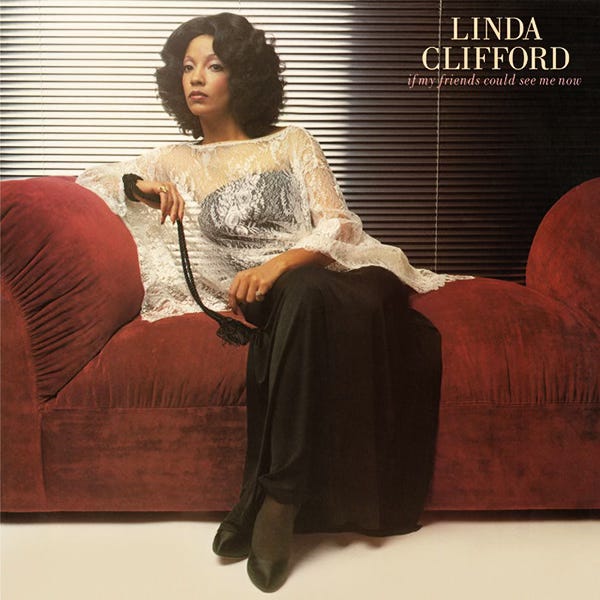

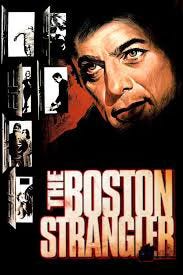
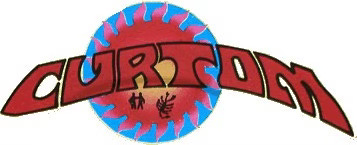
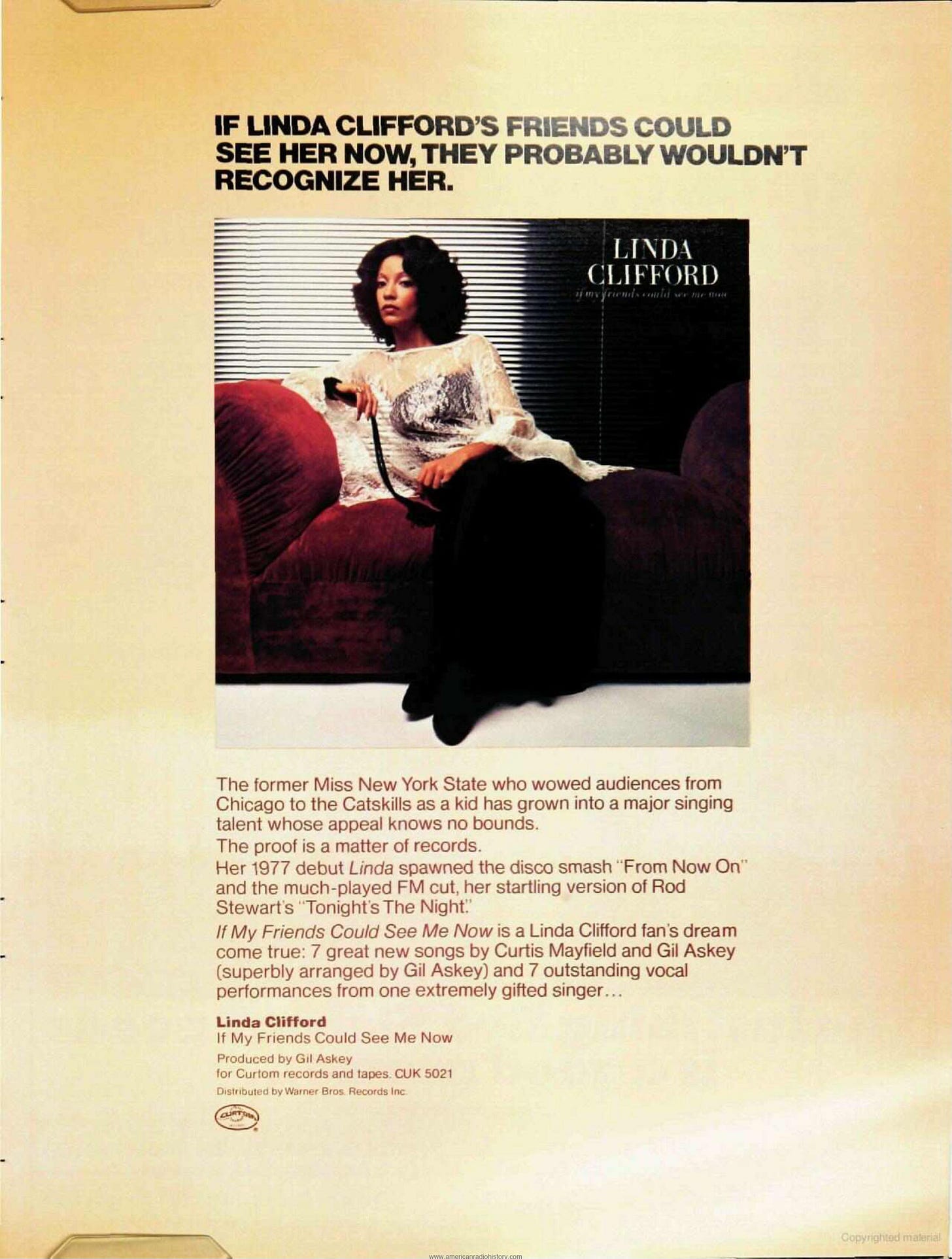
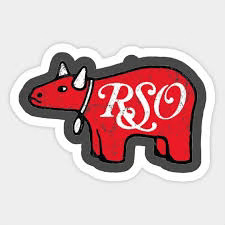
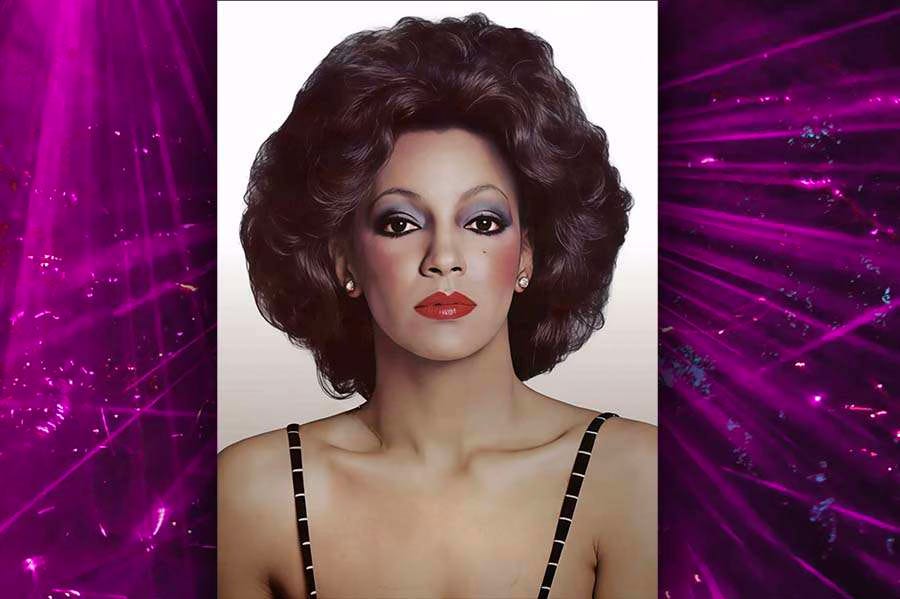
I admittedly didn't know anything about this artist or her repertoire, so consider me properly schooled! What a voice!
I may be biased here but I love Curtis Mayfield. From what you are saying here, I get the feeling he really did try his best. Shame Linda's career never took off the way it should.
Not an artist I was familiar with but these were all great tracks. It’s incredible how many talented artists have fallen by the wayside over the years because of poor luck and/or bad timing. Really feels like she should’ve been a much bigger success.